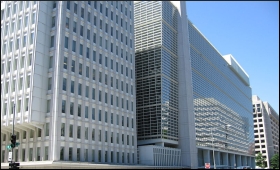|
|
|

|
World Bank provides $400 mn to enhance support for Namami Gange
|
|

|
|
| Top Stories |
 |
|
|
|
SME Times News Bureau | 07 Jul, 2020
The Indian government and the
World Bank on Tuesday signed a loan agreement to enhance support for the
Namami Gange programme that seeks to rejuvenate the Ganga.
The
Second National Ganga River Basin Project will help stem pollution in
the iconic river and strengthen the management of the river basin which
is home to more than 500 million people.
The $400 million operation comprises a loan of $381 million and a proposed guarantee of up to $19 million.
The
agreement for the $381 million loan was signed by Sameer Kumar Khare,
Additional Secretary, Economic Affairs, Ministry of Finance on behalf of
the government, and Qaiser Khan, Acting Country Director (India), on
behalf of the World Bank. The guarantee instrument will be processed
separately.
Khare said that the Ganga is India's most important
cultural, economic and environmental resource, and the government's
Namami Gange programme seeks to ensure that the river returns to a
pollution-free, ecologically healthy state.
The new project will
extend the government's and World Bank's engagement in this critical
national programme to make the Ganga a clean, healthy river.
The
World Bank has been supporting the government's efforts since 2011
through the ongoing National Ganga River Basin Project, which helped set
up the National Mission for Clean Ganga (NMCG) as the nodal agency to
manage the river, and financed sewage treatment infrastructure in
several riverside towns and cities.
Rajiv Ranjan Mishra, Director
General of the National Mission for Clean Ganga, said that the
continuity provided by the Second National Ganga River Basin Project
will consolidate the momentum achieved under the first World Bank
project, and help NMCG introduce further innovations, and benchmark its
initiatives against global best practices in river rejuvenation.
"The
government's Namami Gange Programme has revitalized India's efforts to
rejuvenating the Ganga," Junaid Ahmad, World Bank Country Director in
India, said. "The first World Bank project helped build critical sewage
infrastructure in 20 pollution hotspots along the river, and this
Project will help scale this up to the tributaries. It will also help
government strengthen the institutions needed to manage a river basin as
large and complex as the Ganga Basin."
The sprawling Ganga Basin
provides over one-third of India's surface water, includes the
country's largest irrigated area, and is key to India's water and food
security. Over 40 per cent of India's GDP is generated in the densely
populated basin. But the Ganga river is today is facing pressures from
human and economic activity that impact its water quality and flows.
Over
80 per cent of the pollution load in the Ganga comes from untreated
domestic wastewater from towns and cities along the river and its
tributaries. For this, sewage networks and treatment plants in select
urban areas would be built to help control pollution discharges. These
infrastructure investments and the jobs they will generate will also
help India's economic recovery from the Covid-19 (Coronavirus) crisis.
To
ensure that these infrastructure assets function effectively and are
well maintained, the project will build on the innovative Hybrid Annuity
Model (HAM) of public private partnership introduced under the ongoing
NGRBP, and which has become the solution of choice for sewage treatment
investments in the Ganga Basin.
Under this model, the government
pays a private operator 40 per cent of the capital cost to build a
sewage treatment plant during the construction period; the remaining 60
per cent is paid as performance-linked payments over 15 years to ensure
that the operator runs and maintains the plant efficiently.
The
$400 million operation includes a proposed Guarantee of up to $19
million to backstop the government's payment obligations for three
Hybrid-Annuity-Model Public Private Partnership (HAM-PPP) investments on
the Ganga's tributaries.
The $381 million variable spread loan
has a maturity of 18.5 years including a grace period of 5 years. The
$19 million Guarantee Expiry Date will be 18 years from the Guarantee
Effectiveness Date.
|
|
|
| |
|
|
|
|
|
|
|
|
|
|
|
|
|
|
| |
| Customs Exchange Rates |
| Currency |
Import |
Export |
US Dollar
|
₹91.25
|
₹89.55 |
UK Pound
|
₹122.85
|
₹118.85 |
Euro
|
₹107.95
|
₹104.3 |
| Japanese
Yen |
₹59 |
₹57.1 |
| As on 29 Dec, 2025 |
|
|
| Daily Poll |
 |
 |
| What is your biggest hurdle to scaling right now? |
|
|
|
|
|
| Commented Stories |
 |
|
|
|
|
|
| |
|